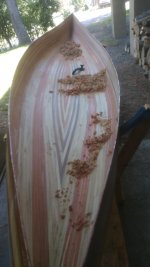I think I will order the book and Wee Lassie 2 patterns. Actually I may have the wife give them to me as my Christmas gift if I can wait.
-
Happy Birthday, Lead Belly (1888-1949)! 🎸🕛🪨🏝️
You are using an out of date browser. It may not display this or other websites correctly.
You should upgrade or use an alternative browser.
You should upgrade or use an alternative browser.
Strips for Pack Canoe Build in FL Panhandle
- Thread starter PeteStaehling
- Start date
The Wee Lasse II is a fine boat.
I purchased plans from Mac. If you lay them over the plans for the Arkansas Traveler, a Henry Rushton design, you will find they are near identical. The Form spacing is different though.
I've built, or been involved building 4 of these.
Here is a link to the latest one.
https://www.canoetripping.net/forum.../80801-nokomis-wood-workers-first-canoe-build
I hope this will help !
Jim
I purchased plans from Mac. If you lay them over the plans for the Arkansas Traveler, a Henry Rushton design, you will find they are near identical. The Form spacing is different though.
I've built, or been involved building 4 of these.
Here is a link to the latest one.
https://www.canoetripping.net/forum.../80801-nokomis-wood-workers-first-canoe-build
I hope this will help !
Jim
The Wee Lasse II is a fine boat.
I purchased plans from Mac. If you lay them over the plans for the Arkansas Traveler, a Henry Rushton design, you will find they are near identical. The Form spacing is different though.
I've built, or been involved building 4 of these.
Here is a link to the latest one.
https://www.canoetripping.net/forum.../80801-nokomis-wood-workers-first-canoe-build
I hope this will help !
Jim
I did a quick peek at that link and will spend more time looking at it. Thanks for the link and the comments. Do you happen to know how many linear feet of strips you needed? If I cut my own I am not too concerned with a good estimate since buying more lumber or having some left over isn't a big deal with local suppliers, but I am still considering possibly ordering premade strips shipped from far away and in that case I figure I need a very good estimate.
The amount you will pay for milled strips is Staggering. Guessing in the $800-$1,000 range shipped. I can easily mill my own for $150.
I understand some don't want to mill their own. But it requires deeper pockets.
I would buy 14' lumber, with combined plank width of a minimum of 24" . More is better, especially if you purchase Knotty planks.
I understand some don't want to mill their own. But it requires deeper pockets.
I would buy 14' lumber, with combined plank width of a minimum of 24" . More is better, especially if you purchase Knotty planks.
The amount you will pay for milled strips is Staggering. Guessing in the $800-$1,000 range shipped. I can easily mill my own for $150.
I understand some don't want to mill their own. But it requires deeper pockets.
I would buy 14' lumber, with combined plank width of a minimum of 24" . More is better, especially if you purchase Knotty planks.
Well I certainly have the ability to mill my own. Decent lumber is another matter. I think I can probably find enough if I pick and choose from a bunch of different big box stores. I doubt any of it will be 14'. Maybe if I am lucky some of it will be 12' but even that isn't a given. I don't mind scarfing or butting it for that matter. Perhaps I can find some nice lumber yet. I have not yet reached out to the lumber yards that I have withing a day trip of home.
Is the cost of pre-made strips really that high? I'll have to price it out and see just how bad it is. If so it just isn't going to happen. If is really is $800-1000 for just the strips and if that was the only option I'd give up on the plan and build a skin on frame with local cypress or something.
- Joined
- Aug 10, 2018
- Messages
- 2,107
- Reaction score
- 7,019
Cypress is pretty but, at 32# per cubic foot, you might be better off with poplar. It should grow in Northern Florida and it tips the scales at 29#. Figuring a decrease in strip thickness to 3/16, the core weight would be equivalent to 21.75# per cubic foot (Northern White Cedar). If you like the look of poplar well enough, it might be an option...
http://www.noahsmarine.com/kit-nf-ro...rills_cfg.html
Over a Grand for the basic kit, including glass and resin. not including shipping.
Over a Grand for the basic kit, including glass and resin. not including shipping.
Cypress is pretty but, at 32# per cubic foot, you might be better off with poplar. It should grow in Northern Florida and it tips the scales at 29#. Figuring a decrease in strip thickness to 3/16, the core weight would be equivalent to 21.75# per cubic foot (Northern White Cedar). If you like the look of poplar well enough, it might be an option...
I was a little puzzled by your numbers. Then I realized that you were devaluing the poplar weight for going to 3/16". While obvious it didn't click in my head right away. The thing is that I was already figuring on going with 3/16" regardless of species so it is hard for me to use that rationalization.
You do have a point about poplar. Nice poplar is pretty easy to come by here. It can be pretty and is reasonably rot resistant so it would be suitable for either sof or strip building. Right? I have a local mill guy who would probably either have some nice poplar or keep an eye out for some. He would likely find some that had pretty color if given time. I recall that he had some pictures of some very pretty rainbow poplar not long ago, but the run of the mill stuff is nice enough IMO. Some may hate the greenish cast that some of it has, but I don't mind that. There is some attraction to using local product and his prices are good, dirt cheap compared to what I'd pay for just about any other option I have considered so far.
Basswood is another consideration that maybe I shouldn't rule out. I have not shopped for it locally, but imagine it is available. After a quick glance at the wiki page it doesn't look like it commonly grows here though, so probably not from the local mill. At 26 lbs/ft3 the weight isn't bad. The color isn't bad either. The grain is monotonous, but with some accent strips it can be pretty judging by the pictures others have shared. Rot resistance is poor. Not sure how big of a deal that is when encased in epoxy.
Mix in some Western cedar or similar dark wood for accent strips, and it'll look good. I used 3/16" thick strips. So far I don't regret it, but there were times when I second guessed it. When I was shaving the hull down removing the glue and high spots, I did get a little concerned that I was going to shave through. My wife didn't help much when she kept saying I wasn't going to have any wood left for the hull. When I see the bottom flex when we are out paddling, I cringe.
Attachments
As far as I know, which isn't much, the rot resistance of the wood shouldn't matter because it'll be incased in fiberglass and resin.
As far as I know, which isn't much, the rot resistance of the wood shouldn't matter because it'll be incased in fiberglass and resin.
Yeah, seems reasonable. On the other hand some minor cracks would possibly allow for water intrusion. I wouldn't want to say for sure myself.
OTOH, I definitely have seen water get into deck cores on sailboats. That happens a lot, but most often through places where hardware or other things pierce the core or edges of hatches. It ls less frequent,but it also gets in through cracking in the layup.
Well, I went ahead and ordered a set of cove and bead router bits (1/2" shank x 1/4"r Yonico). I also ordered the book and templates for the Wee Lassie 2 from Feather Canoes.
I have looked at a few youtube videos and other online build info. I find it interesting how little info there seems to be on building and setting up the strong back and forms. They seldom even mention what either is even make from. It would seem that these items are key to success and yet they are barely mentioned if at all in most build videos.
A few show someone taking care in getting the forms aligned, but even those don't go into much detail about construction or materials used. Then they go into great detail about all kinds of personal preference stuff like what color accent stripes they used and leave out even the most basic info about forms and strong back.
I am sure it is something I can figure out a suitable setup for on my own and I imagine the book may go into more detail, but why is there not more emphasis on what has already been figured out as the best answer by others?
It seems like 90% or more of the build videos start with a strong back and forms sitting there already set up. I can see that if maybe they are building in a class, at a friend's shop, or somewhere else where someone else did the setup before they ever got there. Otherwise it seems kind of crazy.
Edit: I shouldn't give the impression that there was no info at all. I did see a couple sources that showed options for the strong back. Details on what sheet goods they used for the forms and how they were built and attached to the strong back seemed especially scarce.
I have looked at a few youtube videos and other online build info. I find it interesting how little info there seems to be on building and setting up the strong back and forms. They seldom even mention what either is even make from. It would seem that these items are key to success and yet they are barely mentioned if at all in most build videos.
A few show someone taking care in getting the forms aligned, but even those don't go into much detail about construction or materials used. Then they go into great detail about all kinds of personal preference stuff like what color accent stripes they used and leave out even the most basic info about forms and strong back.
I am sure it is something I can figure out a suitable setup for on my own and I imagine the book may go into more detail, but why is there not more emphasis on what has already been figured out as the best answer by others?
It seems like 90% or more of the build videos start with a strong back and forms sitting there already set up. I can see that if maybe they are building in a class, at a friend's shop, or somewhere else where someone else did the setup before they ever got there. Otherwise it seems kind of crazy.
Edit: I shouldn't give the impression that there was no info at all. I did see a couple sources that showed options for the strong back. Details on what sheet goods they used for the forms and how they were built and attached to the strong back seemed especially scarce.
Pete,
Any of Alan’s, Jim’s or my build threads will have as much info as any random online video.
Additionally, any of the builders here would be very willing to supply custom advice to you.
What could be better?
Any of Alan’s, Jim’s or my build threads will have as much info as any random online video.
Additionally, any of the builders here would be very willing to supply custom advice to you.
What could be better?
Pete,
Congrats on your decision to build! I totally agree with Stripperguy's post. I'm maybe half way through my first build, and the mentoring, advice and encouragement I've received here has been invaluable. I've also found it helpful to read Canoecraft by Moore's, and Gilpatricks book on building strip canoes. For me at least, the books helped me understand the process. Once my build started I've had questions not answered by the books, but knowledgeable, helpful folks here to guide me.
My 2 cents on the strong back: It's just a long saw horse that needs to remain dimensionally stable for the duration of the build. Lots of ways to accomplish that.
Rick
Congrats on your decision to build! I totally agree with Stripperguy's post. I'm maybe half way through my first build, and the mentoring, advice and encouragement I've received here has been invaluable. I've also found it helpful to read Canoecraft by Moore's, and Gilpatricks book on building strip canoes. For me at least, the books helped me understand the process. Once my build started I've had questions not answered by the books, but knowledgeable, helpful folks here to guide me.
My 2 cents on the strong back: It's just a long saw horse that needs to remain dimensionally stable for the duration of the build. Lots of ways to accomplish that.
Rick
On the strong back I am thinking maybe a box construction possibly in sections for easy storage and easy extension by adding another section later, I am thinking either plywood or MDF in a 6" square box section and 48" long sections. Good or bad idea? I think I can make the joints true and rigid.
Pete, if you EVER find suitable wood in the Big Bend forests, I'd consider paying you to build a 15' tandem for my family in Tallahassee.
On the strong back I am thinking maybe a box construction possibly in sections for easy storage and easy extension by adding another section later, I am thinking either plywood or MDF in a 6" square box section and 48" long sections. Good or bad idea? I think I can make the joints true and rigid.
I'm in the process of tidying up after my first build. My strongback is disassembled - I'll snap some pics today. It's made out of industrial plywood that I picked up for a song. Weird thickness, though - I think it's metric (17mm).
Pete, if you EVER find suitable wood in the Big Bend forests, I'd consider paying you to build a 15' tandem for my family in Tallahassee.
I definitely can find wood to use. It may or may not be my first choice of species though.
After building a couple hundred musical instruments I found the business taking over my life more than I wanted and have been kind of hiding from customers, but who knows after building one I may be looking for an excuse to build another canoe. We'll see how the project goes.
I'm in the process of tidying up after my first build. My strongback is disassembled - I'll snap some pics today. It's made out of industrial plywood that I picked up for a song. Weird thickness, though - I think it's metric (17mm).
I'd be interested in see the pictures or description and maybe some approximate dimensions of the cross section. I was thinking 6" square figuring that can be quite rigid, but I have seen pictures of some much larger.
Upside down, showing all 3 sections separated. Note the 2 removed top pieces of darker plywood leaning against the cabinet in the background:
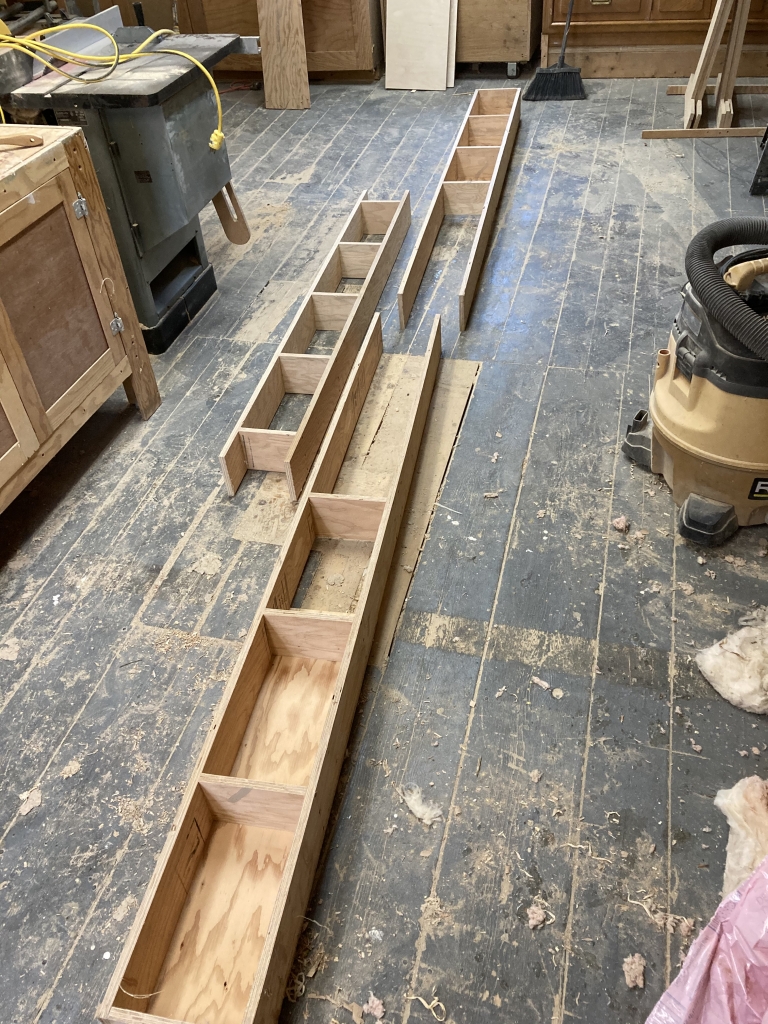
Upside down, assembled:
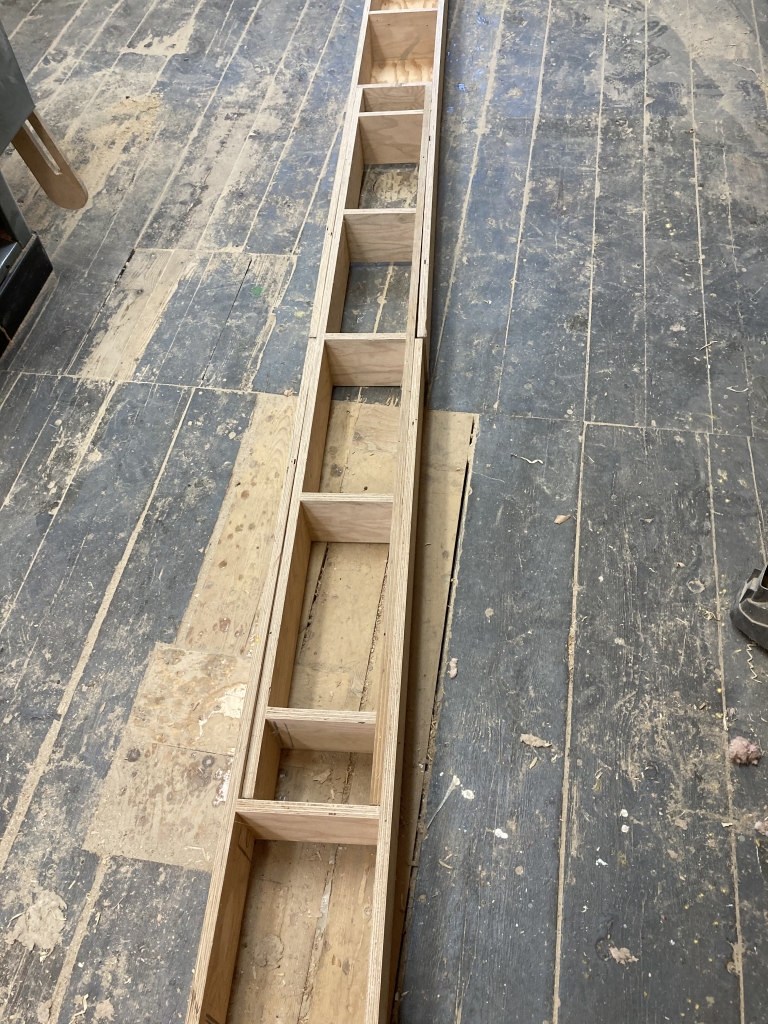
Each end section measures about 85":
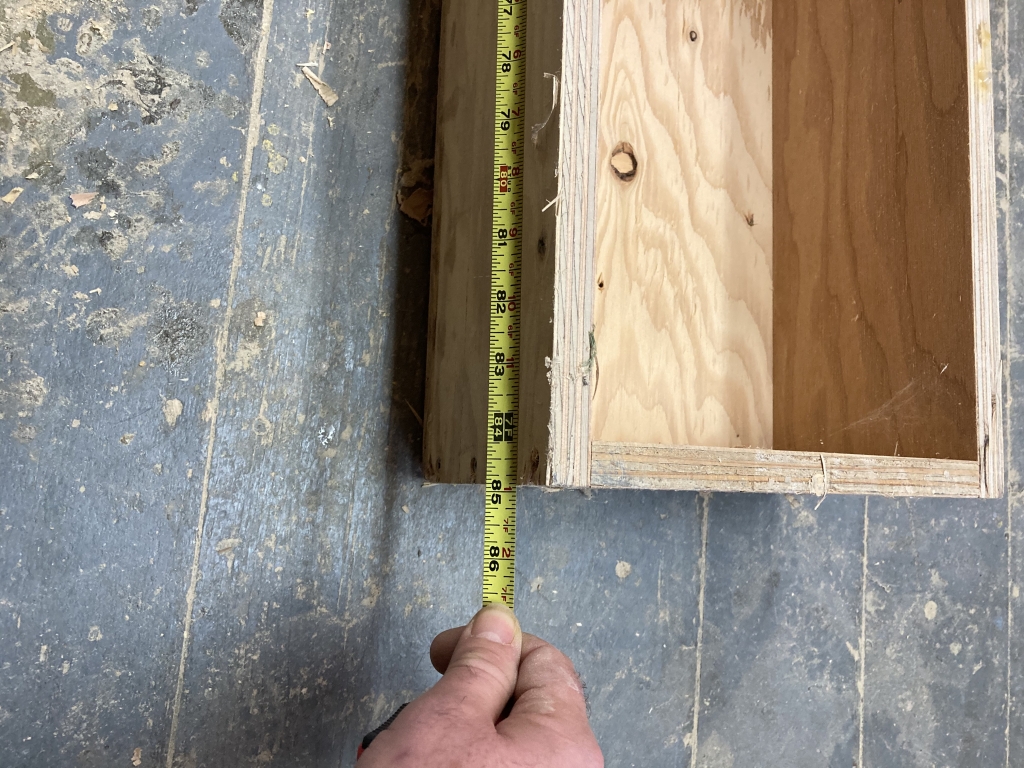
The middle section is just shy of 74". This is so there is some clearance between the it and the last cross supports of the end sections:
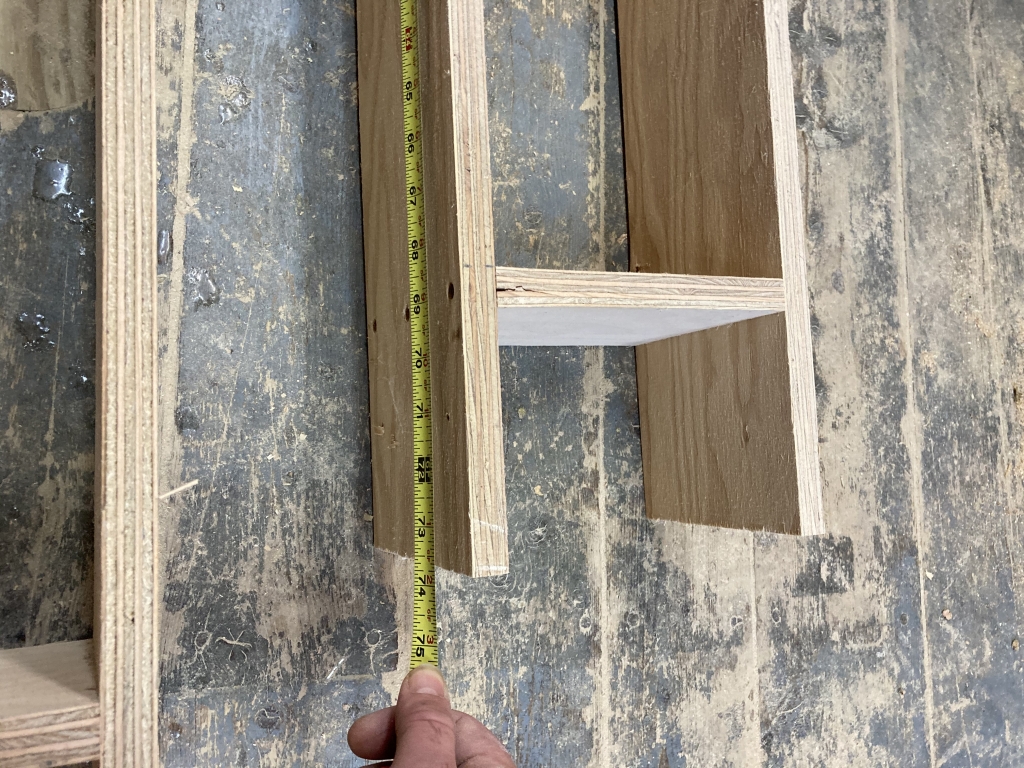
The top of the strong back is 1/2" ply, so it plus the 5 1/2" sides gives 6" total height:
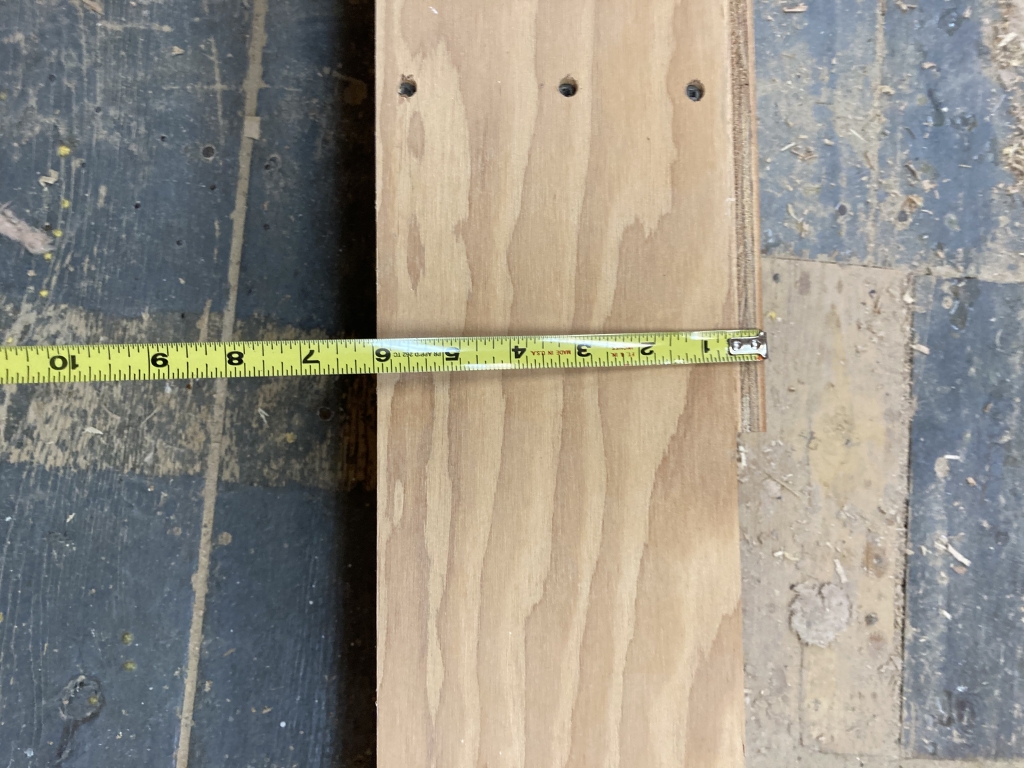
Overall width of the center section is 8", so end sections are 8" inside:
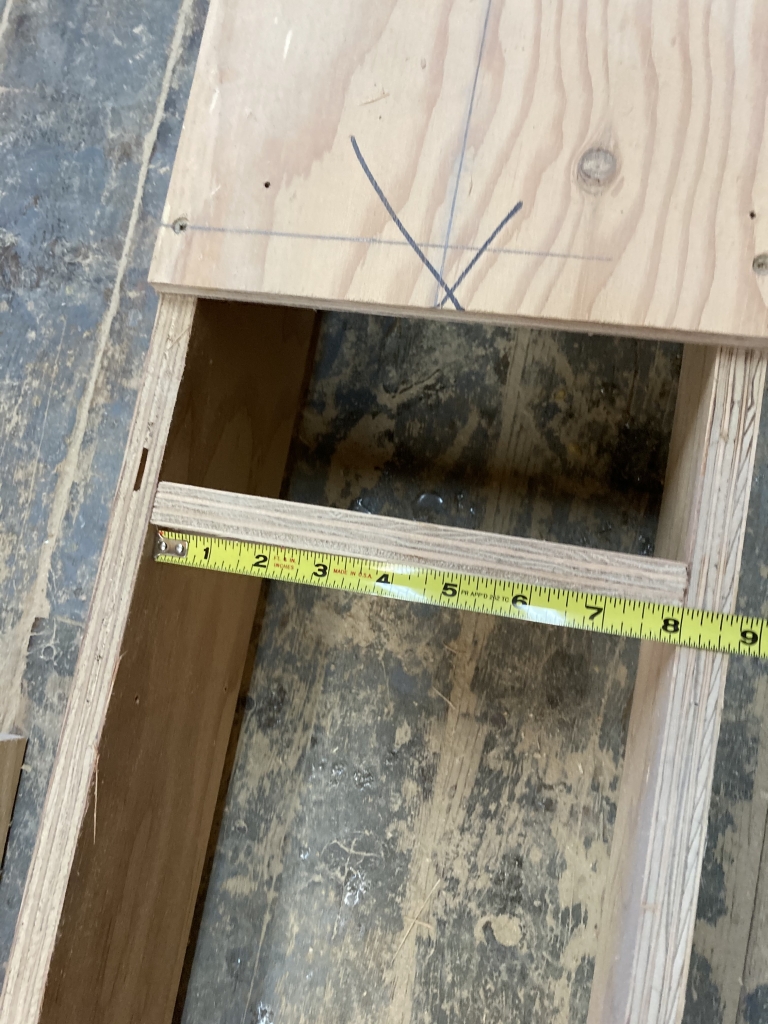
Cross sections/support are 16" on center - legs fit over these pieces:
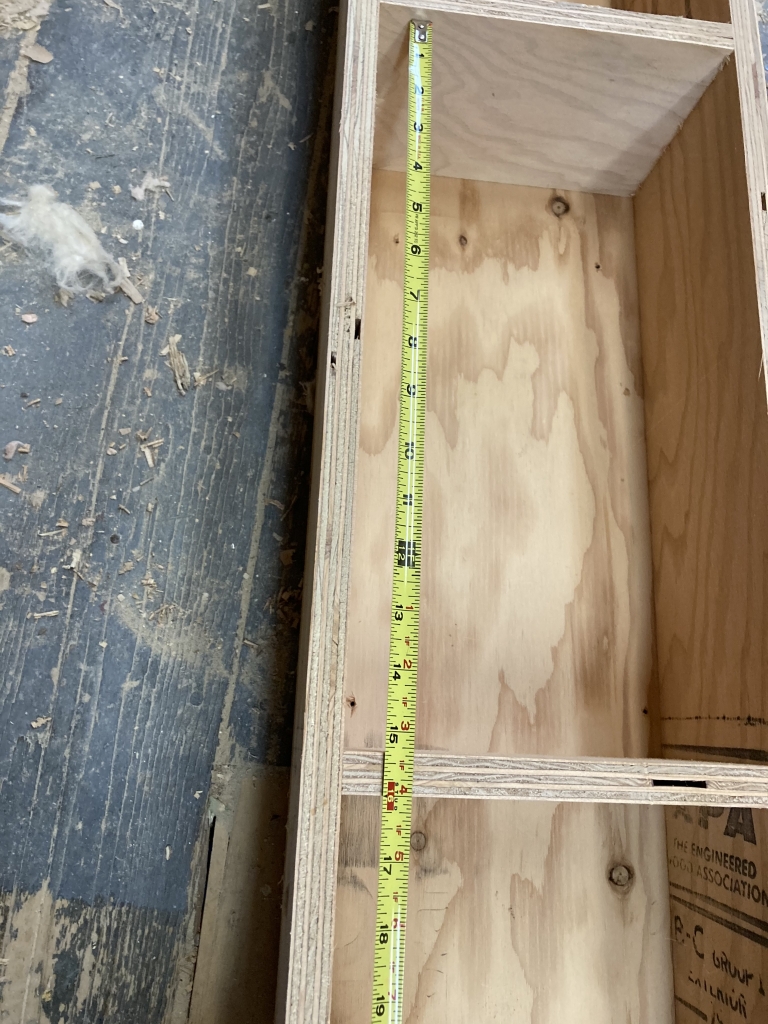
Leg overview:
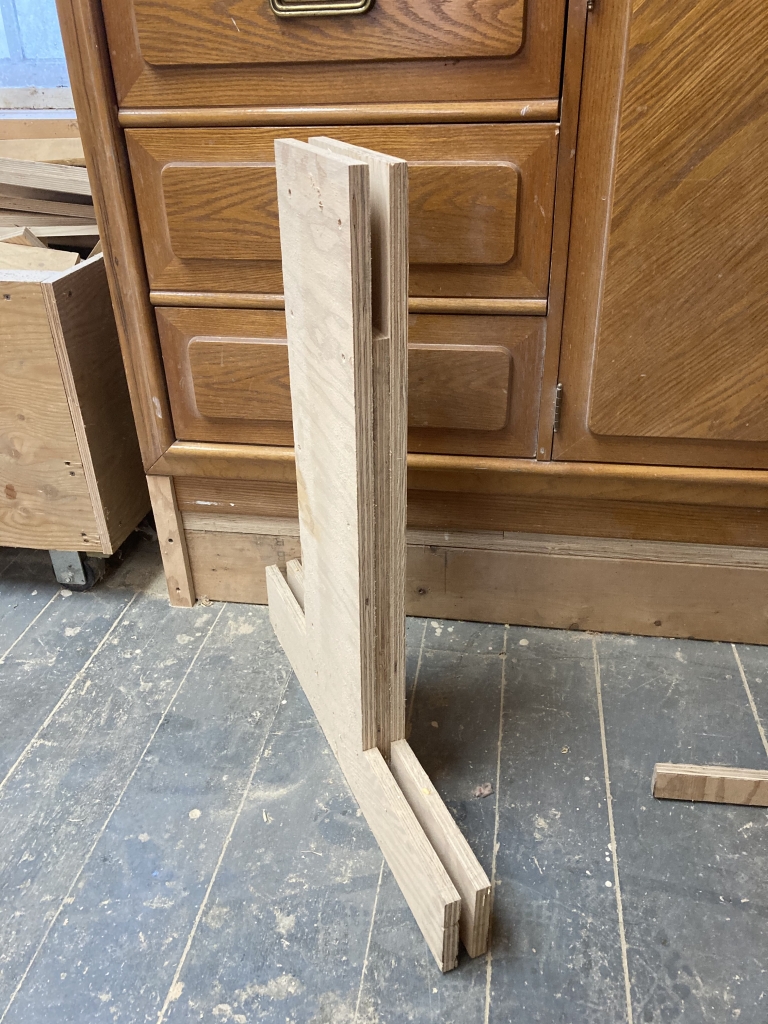
Legs are 28. The 1/2" ply top means the final height is 28 1/2":
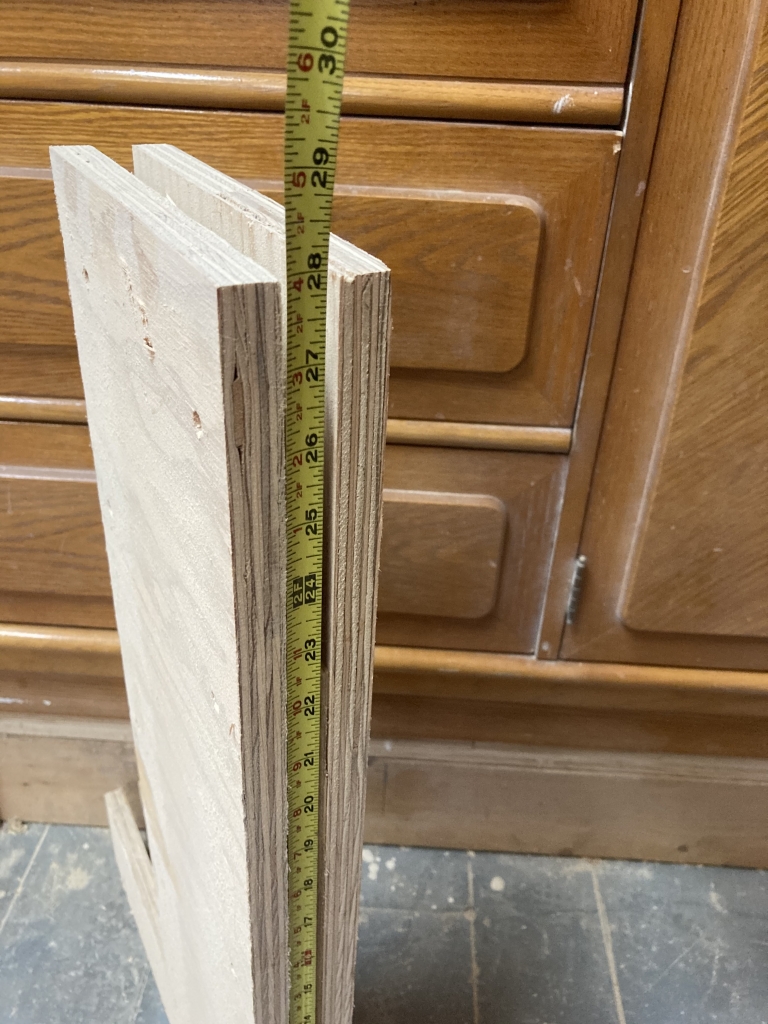

Upside down, assembled:

Each end section measures about 85":

The middle section is just shy of 74". This is so there is some clearance between the it and the last cross supports of the end sections:

The top of the strong back is 1/2" ply, so it plus the 5 1/2" sides gives 6" total height:

Overall width of the center section is 8", so end sections are 8" inside:

Cross sections/support are 16" on center - legs fit over these pieces:

Leg overview:

Legs are 28. The 1/2" ply top means the final height is 28 1/2":

Similar threads
- Replies
- 15
- Views
- 3K
- Replies
- 14
- Views
- 1K

